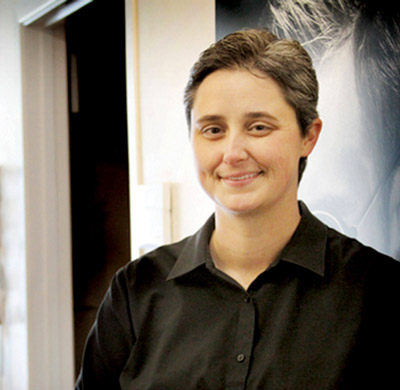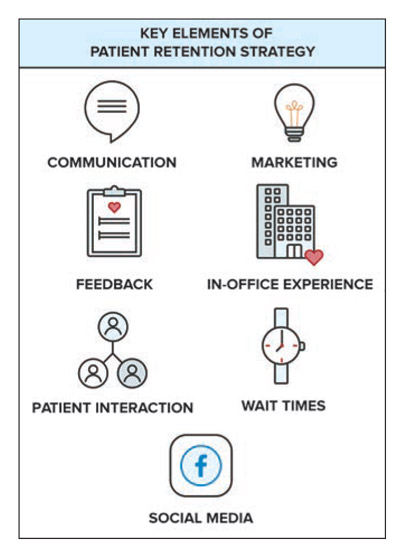

For Stephanie Mitchell, OD, and her practice partner, Krys Gwizdak, OD, being busy with patients is a good problem to have, but it’s still a problem.
There are appointments to make with new and returning patients and reminders to send. The ODs are coping with that challenge with a software platform designed to give optometry practices a more efficient way to keep up.
The software is Solutionreach. They’ve been using it at Sea View Optometric Center in Long Beach, California, for about six months,
after trying a different vendor that Dr. Mitchell says “wasn’t a good fit.” Solutionreach’s three-month trial offer made it easy to go for a test run, she says.
“The software means the practice staff doesn’t have to spend hours on the phone reminding patients about upcoming appointments. Even better, the software lets patients schedule their own appointments online. Patients are busy, too, and they appreciate the option of making their appointments when they’re free to do so,” Dr. Mitchell says.
“We’ve seen an increase in new patients, and we’ve also seen returning patients tell us, ‘I love this; it’s so easy to go online and make the appointment. I don’t have to remember to call during business hours,’” she says. “They can go online to our website or Facebook page and get the time options for an appointment with the doctor they want to see.” The appointment scheduler is available with one click from the main page of the practice’s website or Facebook page.
Visitors select the doctor and the type of visit (e.g., firsttime comprehensive exam, annual return, new Medicare patient) and a
window opens, showing the available appointment slots for the following three weeks. It’s simple and convenient and, by allowing the patient to browse available times, it frees up staff phone time because patients, not the staff member, are finding appointments to fit their schedules.
Patients are told about the online option when they are in the office, and anyone who calls after hours is told about the online option. The practice also sends email blasts to its patients with details about how to engage with the practice through the platform.
Dr. Mitchell says the practice sends out reminders one week before an appointment, as well as the day before and the hour before. The practice also uses the Solutionreach system to let patients know when orders for contact lenses or new eyeglasses are ready.
“The software is easy for staff members to use,” Dr. Mitchell says. When staff arrives in the morning, the Solutionreach system displays an updated schedule and task list. “It’s easy; it just pops on the bottom corner of the computer screen when a patient wants to schedule an appointment, and the staff member verifies the time and sends a confirmation to the patient with one click of a button.”
Solutionreach has also brought new patients to the practice, she says, which helps offset attrition. “The two biggest draws as far as we’re concerned are making it easier for the patient and making it easier for the staff. Solutionreach is cutting down on staff time, allowing staff members to spend more one-on-one time with the patient in front of them. As for patients, this is another piece of technology that makes it easier for patients of all ages, not just younger people, to engage with our practice.”
Why Patient Retention Matters


The hard work of building your patient base by finding new patients can be a frustrating waste of time if you’re not
keeping the patients you already have. Nearly 70 percent of patients who take their business somewhere else do so because they
feel they are being treated with indifference.1
Even as you’re figuring out why patients are leaving you, it’s important, too, to see how much it happens. To figure out your attrition rate, add up the number of new or short-term patients and divide that by your total number of patients (remember to exclude those who came once and never returned). An attrition rate of 10 percent to 30 percent is considered manageable and tolerable
in most practices. Henry Schein places a “normal” attrition rate at 17 percent.2 An attrition rate of 40 percent is something to pay attention to, and an attrition rate of more than 50 percent may indicate a problem to be addressed within your practice.
Making sure that every patient feels like the only patient is the key factor in improving your retention. Important elements in a patient retention strategy include communication that starts even before the patient enters the office and continues past the encounter. It should include marketing, encouraging patient feedback, developing a stellar in-office experience, ongoing interaction with patients, an office process that ensures reasonable wait times and social media outreach to current and new patients. Solutionreach details these keys of patient communication in a new report, Patient Retention: Understanding the Value of Your Current Patients to Your Future Success.


1 Patient retention by the numbers. (2012, June 20) Acupuncture Technology News. Retrieved June 10, 2016, from miridiatech.com/news/2012/06/patient-retention-by-the-numbers/2 www.henryschein.com



